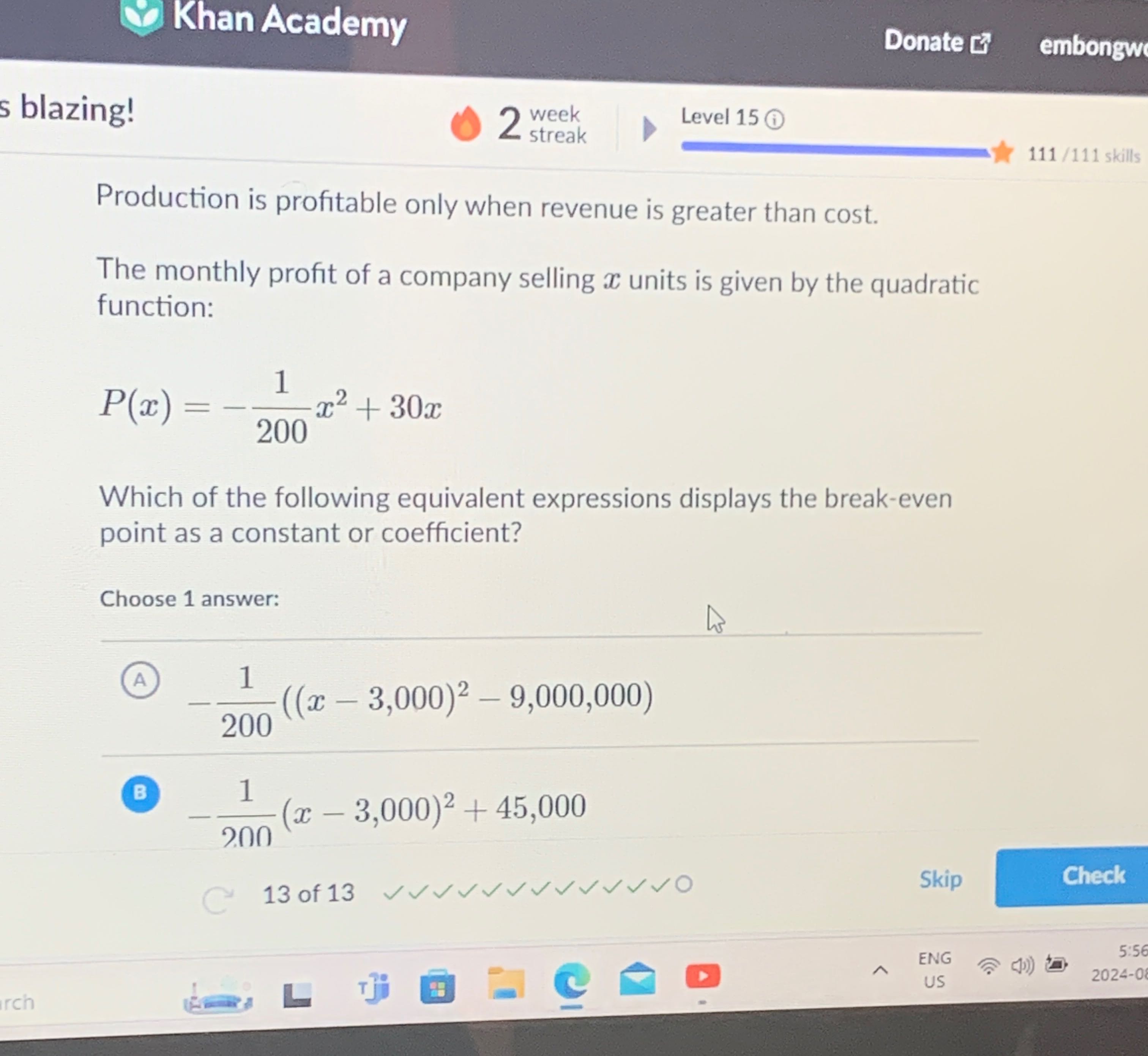AI tutor
Welcome to Bytelearn!
Let’s check out your problem:

Khan Academy Donate ^{()} embongw s blazing! week streak Level // skills Production is profitable only when revenue is greater than cost. The monthly profit of a company selling units is given by the quadratic function: Which of the following equivalent expressions displays the break-even point as a constant or coefficient? Choose answer: of Skip Check ENG US (j))
Full solution
Q. Khan Academy Donate ^{()} embongw s blazing! week streak Level // skills Production is profitable only when revenue is greater than cost. The monthly profit of a company selling units is given by the quadratic function: Which of the following equivalent expressions displays the break-even point as a constant or coefficient? Choose answer: of Skip Check ENG US (j))
- Rewrite function in vertex form: Step : Given function: Rewrite the function in vertex form.
- Complete the square: Step : Complete the square: P(x) = -\left(\frac{}{}\right)(x^ - x)
- Add and subtract values: Step : Add and subtract inside the parentheses:
- Factor and simplify: Step : Factor the perfect square trinomial and simplify:
- Distribute : Step : Distribute the :
- Compare with choices: Step : Compare with given choices: (A) (B)
- Identify break-even point: Step : Identify the expression with the break-even point as a constant or coefficient: Answer is (B)
More problems from Compare linear and exponential growth
QuestionGet tutor help
QuestionGet tutor help
QuestionGet tutor help
QuestionGet tutor help
QuestionGet tutor help
QuestionGet tutor help
QuestionGet tutor help
QuestionGet tutor help
QuestionGet tutor help
